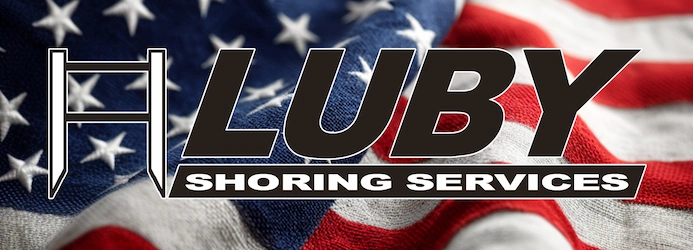If excavation work sites aren’t properly constructed, then this puts the workers at great risk.

Trenching and excavating are both extremely dangerous processes involved in many construction projects. Because of the high levels of risk, the Occupational Safety and Health Administration (OSHA) heavily monitors the way that trenching and excavation sites are constructed. If worksites aren’t properly constructed, there is a high probability that you can compromise the integrity of your structure and that an employee will end up getting injured.
OSHA Safety Procedures
OSHA regulates the particulars about how a trenching or excavation site is built and maintained. The newest guideline changes cover the following parts of operation:
- Dangers related to trenching operations. Since trenching sites are so dangerous, OSHA guidelines are in place to prevent cave-ins that can jeopardize workers, create hazardous atmospheres for surrounding environments, and limit the hazards associated with the machinery needed for trenching.
- The classification of soil types. Trenching sites differ according to the type of soil surrounding them. Since the soil type can greatly affect the risks associated with trenching sites, there are guidelines on how the soil is classified.
- Who is running the trenching site? There are specific things that the supervisor of a trenching site must know to keep things running smoothly and safely. OSHA requires that every trenching site have a “competent person” in charge to ensure that the trench is both constructed and maintained in a specific manner to limit risks. That person needs to have experience with site inspection, soil classification, structural ramp design, water removal monitoring, knowledge of water removal equipment and protective systems.
- Planning factors ahead of time. Before a trenching site can be put into execution, there needs to be a lot of pre-planning done to accommodate risks and to make the site as safe as possible. Since no two sites will ever be the same, they must be approached with specific conditions in mind and constructed accordingly.
- Working around existing utilities. Before you can begin to construct a trenching site, it must be examined to ensure that there aren’t any existing utilities hidden underground, like a gas line. Before you dig, you have to call 811 to have an inspection of the site to ensure that you aren’t going to be digging into something dangerous.
- Protective systems necessary during excavation. Before you even start excavating your trenching site, you have to determine the bench and the slope of the operation. It is also required that you appropriately support all sides of the excavation site, and to shield the site and the work area to keep people out.
Because trenching is such a dangerous part of a construction worksite, there are many restrictions on what you can and can’t do, and how trenching sites are managed and who can manage them. It is important to know what the OSHA guidelines are to keep your workers safe and to stop yourself from incurring fines and being cited for unsafe practices.
St. Louis Trench Shoring & Excavation Services
Get in touch with our St. Louis trench shoring services team to talk about your project. Call us today at (636) 660-7467 or fill out our online contact form.
